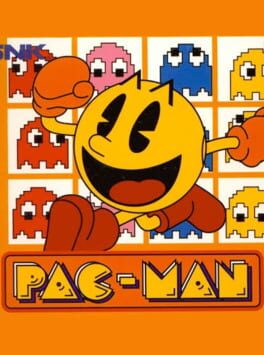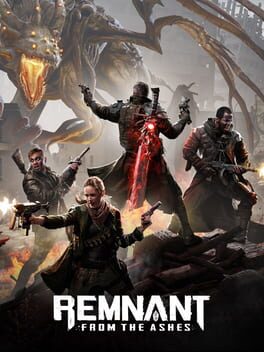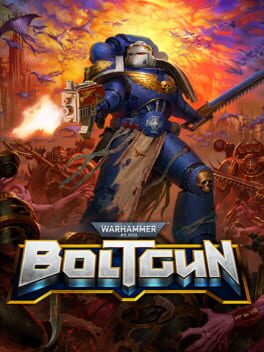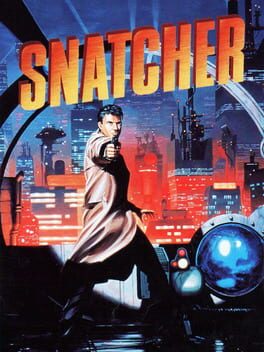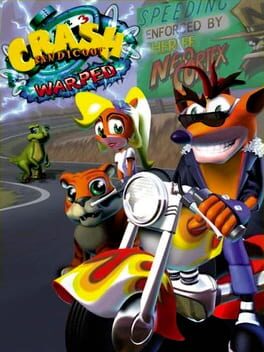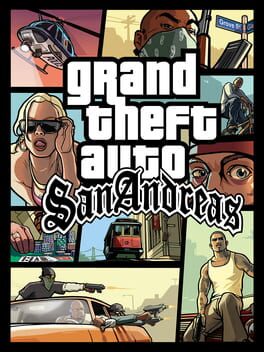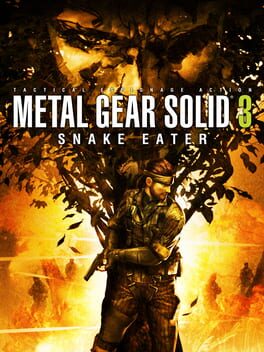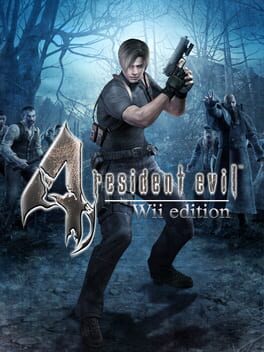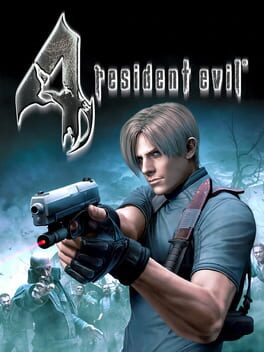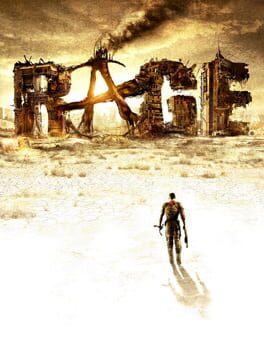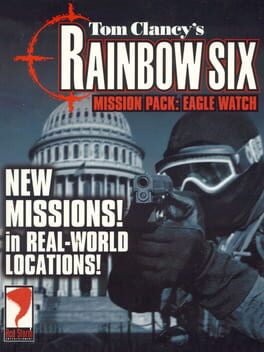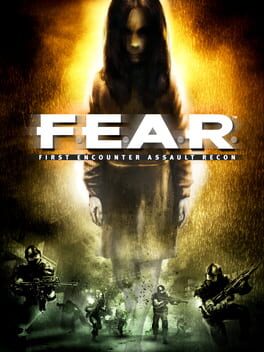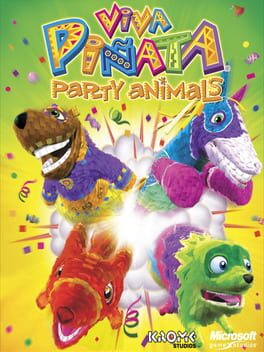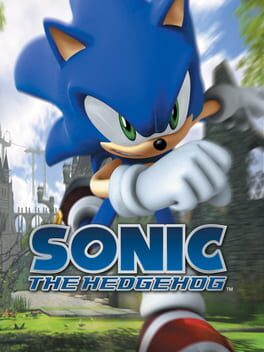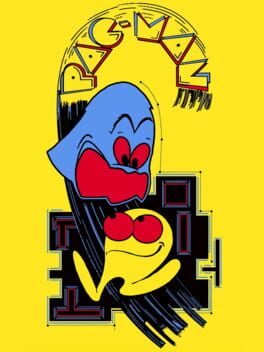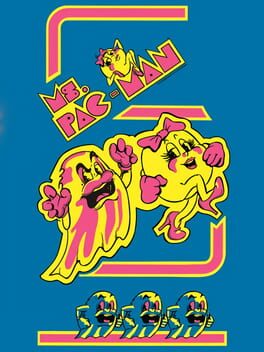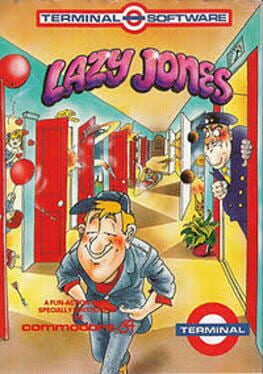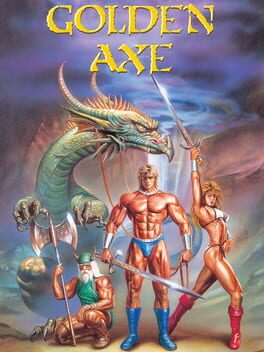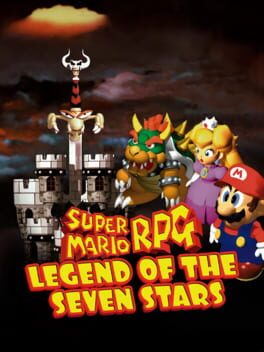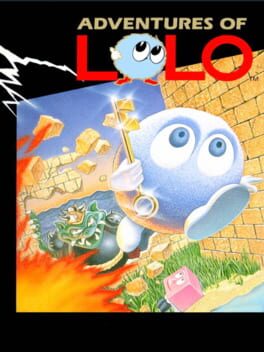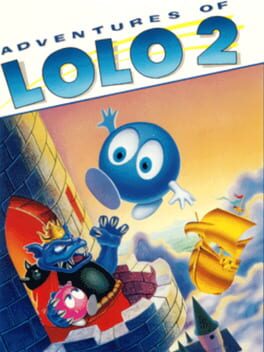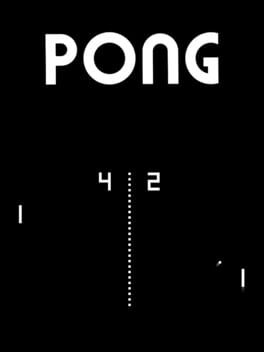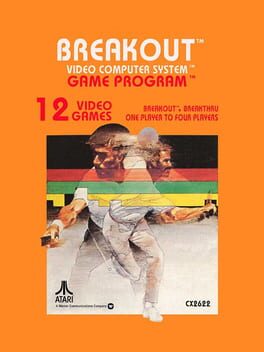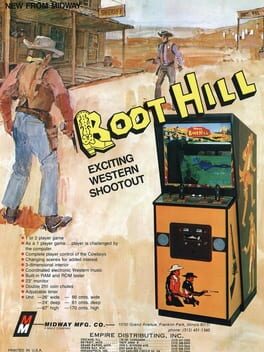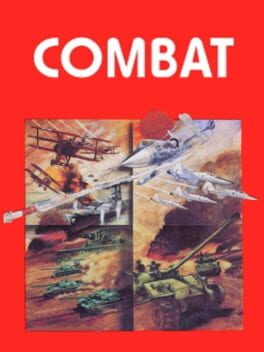JimTheSchoolGirl
406 reviews liked by JimTheSchoolGirl
Pac-Man
1999
I recently purchased a "pack" of Oreo X PAC-MAN Limited Edition biscuits, and felt a tinge of impostor syndrome. Am I really a big enough Pac-Fan to eat these? I mean, sure, I can accurately identify Inky, Pinky, Blinky and Clyde no problem, and I know all the words to Buckner & Garcia's "Pac-Man Fever" off by heart - a song that rips the songwriting traditions of the blues out of the Mississippi Delta and righteously appropriates them to discuss the real hardships (being a gamer) - but I don't really rate Pac-Man as one of my favourite Namco games. It's almost a little too elemental. Too primal. It's a chase game, and that clearly had influence on personal favourites like Dig Dug and Metal Gear, but it doesn't have any of that Dig Dug or Metal Gear stuff that I like in it, either.
I can't decide whether releasing Pac-Man as a standalone Neo Geo Pocket Color game in 1999 was an act of extraordinary hubris, or an earned confidence. I mean, Super Mario Bros. Deluxe on the Game Boy Color was one thing, but this is fucking Pac-Man. No new modes or anything. Pac-Man. One step up from fucking Pong. Maybe if you're younger, all these 20th century years seem to blend together in a big "I don't care" grey area, but we were playing Quake III online by then (or at least, we'd heard someone's big brother did it once, but he had to get off the internet after one match because it was costing a fortune on the phone bill). Seeing this on the shelf below the Game Boys and Pokémon instantly lost all credibility SNK may have hoped to have gained with the under-20s crowd. In the 90's, "retro" was incredibly niche. Like, I was aware of the Street Fighter and Bubble Bobble collections on PS1, but when I imagined someone buying them, they were like studious historians, analysing the software like it had just been dug out of a pharaoh's tomb. These things weren't conceivable as "entertainment" for "people". Who the fuck bought this at launch?
Now, I am that decrepit auld bastard. NGPC Pac-Man is cool. A little obnoxiously so, actually. It kind of predicted the retro boom that would start to take hold in the following decade. Pac-Man is a gaming icon. Literally. He's probably the little button you press on your phone screen to get the emulators on. It's difficult to view him objectively as The Packing Man, unencumbered by the decades of cultural impact that followed, but having a little one-and-done cartridge like this helps.
NGPC Pac-Man's big feature is a little rubber ring that comes in the box. You attach it to the NGPC's microswitch stick and it blocks off the diagonal directions. It's actually really effective, and makes the game feel much snappier, as you're locked to 90 degree turns. SNK are an arcade developer, first and foremost, and their approach in designing a two-button handheld is actually really cute. I think if you're happy to go along with that, and not moan about how naive it is to use this strategy to compete with the Game Boy Color, it's super cool that they put Pac-Man on here. And they set aside some of the budget to manufacture a little piece of rubber to make it as satisfying as it ought to be.
Pac-Man is fun. It's immediately speedy. You don't even press a button, and you shoot right out of the gate. All you can do is steer, avoiding the ghosts, attempting to squeeze into a corner of the map that still has power pellets on it, and seeing if you can keep dodging the baddies long enough to clear the board. Each ghost has their own characteristic, and theoretically, you should be able to use this to determine which direction they'll take at a crossing, but I've still to take the lesson of which one's "Speedy" and which one's "Pokey" to heart. Even ignorant of the specific attributes, it adds something to the game, to know that they're each subtly distinct, and it's a fun dynamic to have in the background, as you do your best to survive.
If you've played enough 80s arcade games, you'll know that Pac-Man can be done very wrong. Have you ever played Wizard of Wor? Fuck me, man. What a nightmare. Pac-Man was pioneering. Most games of the time were either about fighting, sport, or attempting to rip-off Star Wars as liberally as Lucasfilm's legal representation would allow. Pac-Man wasn't trying to be something else. It was proud to be a videogame, and it did something that could only really take the form of a videogame. It was praised for its original, non-violent concept (eating ghosts is not in violation of the Geneva Convention, apparently). It didn't assume anything of its audience. It opened up videogames to entirely new players. Anybody could play this. All the Nintendo oldguard see Pac-Man as the gold standard, and Miyamoto's even pulled the strings, buddying up with Namco bigwigs, to get his own four-player fangame bundled in with copies of R: Racing Evolution. Without a strong affinity for videogames, Keita Takahashi signed up with Namco because they made stuff like Pac-Man, and what other business was committing themselves to fun, novel ideas like that? We all benefit from Pac-Man's glow, and we ought to respect him.
Will you play it for more than five minutes? Probably not. But that's okay, too. We need little games like this.
I can't decide whether releasing Pac-Man as a standalone Neo Geo Pocket Color game in 1999 was an act of extraordinary hubris, or an earned confidence. I mean, Super Mario Bros. Deluxe on the Game Boy Color was one thing, but this is fucking Pac-Man. No new modes or anything. Pac-Man. One step up from fucking Pong. Maybe if you're younger, all these 20th century years seem to blend together in a big "I don't care" grey area, but we were playing Quake III online by then (or at least, we'd heard someone's big brother did it once, but he had to get off the internet after one match because it was costing a fortune on the phone bill). Seeing this on the shelf below the Game Boys and Pokémon instantly lost all credibility SNK may have hoped to have gained with the under-20s crowd. In the 90's, "retro" was incredibly niche. Like, I was aware of the Street Fighter and Bubble Bobble collections on PS1, but when I imagined someone buying them, they were like studious historians, analysing the software like it had just been dug out of a pharaoh's tomb. These things weren't conceivable as "entertainment" for "people". Who the fuck bought this at launch?
Now, I am that decrepit auld bastard. NGPC Pac-Man is cool. A little obnoxiously so, actually. It kind of predicted the retro boom that would start to take hold in the following decade. Pac-Man is a gaming icon. Literally. He's probably the little button you press on your phone screen to get the emulators on. It's difficult to view him objectively as The Packing Man, unencumbered by the decades of cultural impact that followed, but having a little one-and-done cartridge like this helps.
NGPC Pac-Man's big feature is a little rubber ring that comes in the box. You attach it to the NGPC's microswitch stick and it blocks off the diagonal directions. It's actually really effective, and makes the game feel much snappier, as you're locked to 90 degree turns. SNK are an arcade developer, first and foremost, and their approach in designing a two-button handheld is actually really cute. I think if you're happy to go along with that, and not moan about how naive it is to use this strategy to compete with the Game Boy Color, it's super cool that they put Pac-Man on here. And they set aside some of the budget to manufacture a little piece of rubber to make it as satisfying as it ought to be.
Pac-Man is fun. It's immediately speedy. You don't even press a button, and you shoot right out of the gate. All you can do is steer, avoiding the ghosts, attempting to squeeze into a corner of the map that still has power pellets on it, and seeing if you can keep dodging the baddies long enough to clear the board. Each ghost has their own characteristic, and theoretically, you should be able to use this to determine which direction they'll take at a crossing, but I've still to take the lesson of which one's "Speedy" and which one's "Pokey" to heart. Even ignorant of the specific attributes, it adds something to the game, to know that they're each subtly distinct, and it's a fun dynamic to have in the background, as you do your best to survive.
If you've played enough 80s arcade games, you'll know that Pac-Man can be done very wrong. Have you ever played Wizard of Wor? Fuck me, man. What a nightmare. Pac-Man was pioneering. Most games of the time were either about fighting, sport, or attempting to rip-off Star Wars as liberally as Lucasfilm's legal representation would allow. Pac-Man wasn't trying to be something else. It was proud to be a videogame, and it did something that could only really take the form of a videogame. It was praised for its original, non-violent concept (eating ghosts is not in violation of the Geneva Convention, apparently). It didn't assume anything of its audience. It opened up videogames to entirely new players. Anybody could play this. All the Nintendo oldguard see Pac-Man as the gold standard, and Miyamoto's even pulled the strings, buddying up with Namco bigwigs, to get his own four-player fangame bundled in with copies of R: Racing Evolution. Without a strong affinity for videogames, Keita Takahashi signed up with Namco because they made stuff like Pac-Man, and what other business was committing themselves to fun, novel ideas like that? We all benefit from Pac-Man's glow, and we ought to respect him.
Will you play it for more than five minutes? Probably not. But that's okay, too. We need little games like this.
Elden Ring
2022
"Whew," the enamored g@me play0r sighs out in reverence as the boss clearly designed by someone who thought they were on a job for a mediocre Platinum title did three SICKASS ANIMEY slow-mo front flips, each dealing 70% max health damage to the player with around 8 quintillion HP (which was only reasonable to invest a few points into after getting some from the eleventh Piss-And-Shit-Smeared Tree Spirit overworld boss fight that also netted a BAD. ASS. spirit ash to help you circumvent said bosses in the future except it's objectively worse than half the ones you already have) which they got to by trekking across seven hills, seven lands, seven seas and seven hells, each populated by more barren stretches of land than the last with s p o o k y copy-pasted caves and catacombs breaking up the monotony of running into small platoons of disinterested enemies you can't even be assed to to swing a sword on horseback at on your way to the next 𝓛𝓮𝓰𝓪𝓬𝔂 𝓓𝓾𝓷𝓰𝓮𝓸𝓷 (VERY important areas they put all their ACTUAL level design into! which is why half of them are directionless slogs where everything looks the same and with enemy placement done by the one only Mr Miyazaki'ˢ ⁸⁻ʸᵉᵃʳ⁻ᵒˡᵈ ˢᵒⁿ who really liked the funny jump battan) so that they can find an NPC which mysteriously vanished one Saturday night a few weeks into the playthrough but is crucial for the conditions of one of the many different-colored endings outlined by the Purposely Vague and not frequently Irritatingly Nebulous lore (which is totally okay because that's how they always did quests dude :P it's NOT comically archaic in contrast to the world design xP) but at least there's some World Essence and Snail Drippings to pick up on the way in case you ever find a cookbook that teaches you how to MacGuyver the two into a portable ICBM and then not land the shot because the Lands Between Olympic Champion you're chucking it at read your input had superior reflexes, "From the Software has done it again!"
I gotta be honest man I think this formula has the studio stuck spinning their wheels and given ER's astronomical success they're probably not gonna try reinventing it anytime soon. The game isn't bad. I'll still play the DLC. But seeing it heralded as the zenith of the genre let alone Fromsoft's masterwork gives me a fucking migraine.
I gotta be honest man I think this formula has the studio stuck spinning their wheels and given ER's astronomical success they're probably not gonna try reinventing it anytime soon. The game isn't bad. I'll still play the DLC. But seeing it heralded as the zenith of the genre let alone Fromsoft's masterwork gives me a fucking migraine.
Baldur's Gate 3
2020
You have chosen to read my Princess Peach: Showtime! review. This is on you, now.
I think it's worth reflecting on how Peach wasn't really even a character in the original Super Mario Bros. She was a destination. The MacGuffin you needed to reach in order to rightfully claim you'd won the game. The idea to expand beyond that in any way was largely an act of convience, as Fuji TV's Yume Kojo: Doki Doki Panic was rebranded as the second Super Mario game. They needed a roster of four heroes, and there had only been four sentient things in the Mushroom Kingdom that weren't enemies. They took the spritesheet for Lina and drew "The Princess" on top.
I don't point this out to demean or belittle Princess Peach. Far from it. The act of repurposing and rebranding is at the very core of what videogames are. Mario, himself, was the result of seeing what could be done with an unwanted Radar Scope arcade board, and missing out on the opportunity to use Paramount's Popeye characters. OXO, Tennis for Two and Spacewar! were all experiments to see if large-scale supercomputers designed for complex business calculations and global warfare could be used for the purpose of fun. Peach has quite rightly earned the title of Princess of Videogames. A direct descendant of the cathode-ray tube amusement device.
From her first playable appearance in Super Mario Bros. 2, she was treasured by little sisters, cartoon studios, and boys who valued the float-jump more than the societal pressures of homophobia and gender stereotypes. By Mario 64, her significance to the Mushroom Kingdom was fully fleshed-out, positioning the entire game within her castle, and illustrating her unwavering benevolence, ethereal presence, and also, her sense of fun with the introduction of her personally-commissioned Secret Slide. She was a true representative of videogames, and a welcoming presence for audiences who may have felt uninvited to the games gang.
In 2024, I feel Nintendo are more aware of the weight of their history. Back when they last tried this, with 2005's Super Princess Peach, there was an air of carelessness. It was a throwaway game, fobbed off to Chubby Cherub/Shrek: Reekin' Havoc devs, Tose, and launched to a market whose respect for Nintendo had already taken a beaten from the likes of DK: King of Swing, Super Mario Ball and Classic NES Series: Ice Climber. Now, Nintendo treat Peach with due reverence, having her host Universal Studios meet-and-greets in her own personal bandstand, as the highlight of millions of holidays. People are thrilled to meet her, regardless of how much spaghetti she's made for them.
Right now, we're in a very odd period for the Mario brand, overall. Nintendo have embraced the idea that there's no unified vision of what Mario is. In the last year, we've had a mainline 2D entry closely modelled on the art direction of Masanobu Sato, a major Hollywood movie that denied post-1994 backstories and reinstated the NES-era US canon, a remake of a very of-its-time mid-nineties Mario RPG, and the announcement of the remake of a very distinctly eccentric fan-favourite GameCube RPG. Mario has become Mr. Video again, appearing in all sorts of different projects, merely as a comforting presence. He's a doctor and an artist and a kart racer and an umpire and we're not supposed to take any of it very seriously.
The dynamic sits awkwardly in relationship to why New Super Mario Bros. took its iconography so seriously in the first place. Back then, it was a relief to see the series discard all the bullshit and get back on target, reinstating what was Real Mario Shit. Goombas were Goombas again, and if there were any weird offshot baddies, fans would need to adopt such convoluted nomenclature as "Mega Para-Biddybuddies". It felt like the programmers had taken more control, with the world defined by hard parameter references. There's a stiffness to that approach that I have a lot of affection for, and it was the lifeblood of the Wii U era (particularly in Europe and Japan). It brought us closer to the logic of the software, subconsciously making us better equipped to appreciate and understand it. It was fiercely objective. It's easy to see why this approach wouldn't resonate with the wider public, though. If Nintendo wanted to catch on to mainstream appeal, they'd need to foresake the concrete utility of their playing pieces and expand their surface-level appeal. During the promotion of the New Super Mario Bros. sequels, developers explained that Peach hadn't been made playable in the game because of how her float-jump would affect the balance of the level design. In Showtime, she doesn't even have the float-jump.
Ah - Here we are.
I don't really like Princess Peach: Showtime very much.
I could come out with excuses, justifications, characterisation discrepancies... I just think it's boring to play. Levels are formulaic and repetitive, there's little dexterity to its gameplay, the rewards system feels like you're playing the game wrong if you're not constantly digging at the scenery to find every hidden item, performance and presentation is way below where it ought to be for a game with this focus, yada yada yada... I don't think it really matters. I just didn't want to play the game very much. The first couple of days I had it, I was telling myself I was too busy to calm down and enjoy it. I spent multiple days away from it before completion, and only went back to it out of obligation. I really wanted to care less, and not bother coming back.
As much fondness as I may have for the character, I'm clearly not the target audience for this. And I don't mean to imply that it's a game strictly for young girls, either. But it probably is for fans of recent Yoshi games. I'm certainly not one of them. As I dodder around, looking at the nice artwork, but wondering what I'm supposed to be getting out of it. It's a bit of a shock to see Mystical Ninja's Etsunobu Ebisu come back to a directing role to make something so devoid of spark or humour. Though the different costumes grant Peach a range of diverse abilities, the structure of each introductory level is largely the same, and the bulk of her more intricate actions are automated. In a move that recalls Metroid: Other M, all core actions have been distributed between two face buttons, and if there's anything particularly acrobatic or impressive, it doesn't often feel like you were very involved in performing them.
Showtime is fun in theory. The level themes are bold and exciting, Peach's costumes and in-character voice clips are cute, there's a lot of great art and punny design. I saw one review compare it to Kirby and the Forgotten Land and became incensed. That's a game that loves being a game. It celebrates the medium, embraces all the tropes that come with being a platformer, and sets up young audiences to embark on a future, exploring many wonderful videogames. Showtime is like Paper Mario with all the jokes, strategy and compelling gameplay stripped out. It's an RPG without story or combat. If you wanted to dedicate a budget to having a team design a bunch of charming adventures for Princess Peach to go on, I can totally get behind that, but why make this game when your passions and energy were better suited to a series of YouTube shorts, or a pop-up book?
There's definitely things I wanted to like. I felt like I should have liked. There's several parts of the concept that feel like they're paying off on things they established with Peach's character years ago. The fact that Odyssey ended with her setting off to explore the world in a bunch of cute outfits feels like it was leading up to an idea like this. They're making a game with Cowgirl Princess Peach, for god's sake. How haven't I come away raving about it? It's just all so tame. Mermaid Peach sings underwater to guide helpful fish, and that sounds like something I should have adored, but they never take the next logical step with one of those trademark Nintendo Switch vocal themes. Why didn't they want this game to be brilliant?
Something that surprised me is how bothered I was by the stageplay concept. The notion that to some level, this was all pretend. That Peach is taking on the role of a character for each level. Her voice sounds different for a bunch of them. I don't really feel like this is a game about Peach. It's about her playing the part of generic characters. I didn't feel any sense of drama until the very end, when she emerges outside of the Sparkle Theatre, as herself. It was the first thing since the intro that the game was trying to convey as authentic. Maybe if I just believed in the game - like there was a real throughline that meant each level was an important new part of a story - I wouldn't have been so bored with it. You really don't have to do a lot to get me with this stuff. I honestly found myself crying when I first heard Odyssey attempt to finally convey Peach's perspective on her relationship with Mario. Is this what a good story has to offer a game? As it is, it felt like I'd bought a colouring-in book, and for some bizarre reason, it was important that I finish every page.
This is very much a 'me problem'. I hope I've established my criticisms as fiercely subjective. I can see some folk getting a lot out of this. I've heard some say that they loved Yoshi's Woolly World. I certainly don't want to convince Nintendo that people don't like Princess Peach games. It's just that I had to play through Sexy Parodius and Third Strike before I'd gotten through this, just to remind myself that I do enjoy playing videogames.
I think it's worth reflecting on how Peach wasn't really even a character in the original Super Mario Bros. She was a destination. The MacGuffin you needed to reach in order to rightfully claim you'd won the game. The idea to expand beyond that in any way was largely an act of convience, as Fuji TV's Yume Kojo: Doki Doki Panic was rebranded as the second Super Mario game. They needed a roster of four heroes, and there had only been four sentient things in the Mushroom Kingdom that weren't enemies. They took the spritesheet for Lina and drew "The Princess" on top.
I don't point this out to demean or belittle Princess Peach. Far from it. The act of repurposing and rebranding is at the very core of what videogames are. Mario, himself, was the result of seeing what could be done with an unwanted Radar Scope arcade board, and missing out on the opportunity to use Paramount's Popeye characters. OXO, Tennis for Two and Spacewar! were all experiments to see if large-scale supercomputers designed for complex business calculations and global warfare could be used for the purpose of fun. Peach has quite rightly earned the title of Princess of Videogames. A direct descendant of the cathode-ray tube amusement device.
From her first playable appearance in Super Mario Bros. 2, she was treasured by little sisters, cartoon studios, and boys who valued the float-jump more than the societal pressures of homophobia and gender stereotypes. By Mario 64, her significance to the Mushroom Kingdom was fully fleshed-out, positioning the entire game within her castle, and illustrating her unwavering benevolence, ethereal presence, and also, her sense of fun with the introduction of her personally-commissioned Secret Slide. She was a true representative of videogames, and a welcoming presence for audiences who may have felt uninvited to the games gang.
In 2024, I feel Nintendo are more aware of the weight of their history. Back when they last tried this, with 2005's Super Princess Peach, there was an air of carelessness. It was a throwaway game, fobbed off to Chubby Cherub/Shrek: Reekin' Havoc devs, Tose, and launched to a market whose respect for Nintendo had already taken a beaten from the likes of DK: King of Swing, Super Mario Ball and Classic NES Series: Ice Climber. Now, Nintendo treat Peach with due reverence, having her host Universal Studios meet-and-greets in her own personal bandstand, as the highlight of millions of holidays. People are thrilled to meet her, regardless of how much spaghetti she's made for them.
Right now, we're in a very odd period for the Mario brand, overall. Nintendo have embraced the idea that there's no unified vision of what Mario is. In the last year, we've had a mainline 2D entry closely modelled on the art direction of Masanobu Sato, a major Hollywood movie that denied post-1994 backstories and reinstated the NES-era US canon, a remake of a very of-its-time mid-nineties Mario RPG, and the announcement of the remake of a very distinctly eccentric fan-favourite GameCube RPG. Mario has become Mr. Video again, appearing in all sorts of different projects, merely as a comforting presence. He's a doctor and an artist and a kart racer and an umpire and we're not supposed to take any of it very seriously.
The dynamic sits awkwardly in relationship to why New Super Mario Bros. took its iconography so seriously in the first place. Back then, it was a relief to see the series discard all the bullshit and get back on target, reinstating what was Real Mario Shit. Goombas were Goombas again, and if there were any weird offshot baddies, fans would need to adopt such convoluted nomenclature as "Mega Para-Biddybuddies". It felt like the programmers had taken more control, with the world defined by hard parameter references. There's a stiffness to that approach that I have a lot of affection for, and it was the lifeblood of the Wii U era (particularly in Europe and Japan). It brought us closer to the logic of the software, subconsciously making us better equipped to appreciate and understand it. It was fiercely objective. It's easy to see why this approach wouldn't resonate with the wider public, though. If Nintendo wanted to catch on to mainstream appeal, they'd need to foresake the concrete utility of their playing pieces and expand their surface-level appeal. During the promotion of the New Super Mario Bros. sequels, developers explained that Peach hadn't been made playable in the game because of how her float-jump would affect the balance of the level design. In Showtime, she doesn't even have the float-jump.
Ah - Here we are.
I don't really like Princess Peach: Showtime very much.
I could come out with excuses, justifications, characterisation discrepancies... I just think it's boring to play. Levels are formulaic and repetitive, there's little dexterity to its gameplay, the rewards system feels like you're playing the game wrong if you're not constantly digging at the scenery to find every hidden item, performance and presentation is way below where it ought to be for a game with this focus, yada yada yada... I don't think it really matters. I just didn't want to play the game very much. The first couple of days I had it, I was telling myself I was too busy to calm down and enjoy it. I spent multiple days away from it before completion, and only went back to it out of obligation. I really wanted to care less, and not bother coming back.
As much fondness as I may have for the character, I'm clearly not the target audience for this. And I don't mean to imply that it's a game strictly for young girls, either. But it probably is for fans of recent Yoshi games. I'm certainly not one of them. As I dodder around, looking at the nice artwork, but wondering what I'm supposed to be getting out of it. It's a bit of a shock to see Mystical Ninja's Etsunobu Ebisu come back to a directing role to make something so devoid of spark or humour. Though the different costumes grant Peach a range of diverse abilities, the structure of each introductory level is largely the same, and the bulk of her more intricate actions are automated. In a move that recalls Metroid: Other M, all core actions have been distributed between two face buttons, and if there's anything particularly acrobatic or impressive, it doesn't often feel like you were very involved in performing them.
Showtime is fun in theory. The level themes are bold and exciting, Peach's costumes and in-character voice clips are cute, there's a lot of great art and punny design. I saw one review compare it to Kirby and the Forgotten Land and became incensed. That's a game that loves being a game. It celebrates the medium, embraces all the tropes that come with being a platformer, and sets up young audiences to embark on a future, exploring many wonderful videogames. Showtime is like Paper Mario with all the jokes, strategy and compelling gameplay stripped out. It's an RPG without story or combat. If you wanted to dedicate a budget to having a team design a bunch of charming adventures for Princess Peach to go on, I can totally get behind that, but why make this game when your passions and energy were better suited to a series of YouTube shorts, or a pop-up book?
There's definitely things I wanted to like. I felt like I should have liked. There's several parts of the concept that feel like they're paying off on things they established with Peach's character years ago. The fact that Odyssey ended with her setting off to explore the world in a bunch of cute outfits feels like it was leading up to an idea like this. They're making a game with Cowgirl Princess Peach, for god's sake. How haven't I come away raving about it? It's just all so tame. Mermaid Peach sings underwater to guide helpful fish, and that sounds like something I should have adored, but they never take the next logical step with one of those trademark Nintendo Switch vocal themes. Why didn't they want this game to be brilliant?
Something that surprised me is how bothered I was by the stageplay concept. The notion that to some level, this was all pretend. That Peach is taking on the role of a character for each level. Her voice sounds different for a bunch of them. I don't really feel like this is a game about Peach. It's about her playing the part of generic characters. I didn't feel any sense of drama until the very end, when she emerges outside of the Sparkle Theatre, as herself. It was the first thing since the intro that the game was trying to convey as authentic. Maybe if I just believed in the game - like there was a real throughline that meant each level was an important new part of a story - I wouldn't have been so bored with it. You really don't have to do a lot to get me with this stuff. I honestly found myself crying when I first heard Odyssey attempt to finally convey Peach's perspective on her relationship with Mario. Is this what a good story has to offer a game? As it is, it felt like I'd bought a colouring-in book, and for some bizarre reason, it was important that I finish every page.
This is very much a 'me problem'. I hope I've established my criticisms as fiercely subjective. I can see some folk getting a lot out of this. I've heard some say that they loved Yoshi's Woolly World. I certainly don't want to convince Nintendo that people don't like Princess Peach games. It's just that I had to play through Sexy Parodius and Third Strike before I'd gotten through this, just to remind myself that I do enjoy playing videogames.
The real benefit of living in the future isn't the high-end 4K videogames we get. It's that legacy publishers are desperate enough that they'll let the world play all their killer Japan-only shit.
Hebereke is one of the best games on the Famicom/NES. Easily in my top 5, anyway. It's a full-blown Metroidvania with the sensibilities of Parodius. Stuff that used to get lumped together under the umbrella of "mad Jap games", that I now appreciate as "funny guys making good jokes". There's no backstory to any of its weird characters, or much of a plot. It's just daft stuff jumping around and crows that take explosive dogshits on you. I can enjoy serious, lore-heavy, socially relevant games as much as anybody, but shit like this is definitely my comfort zone. Hebereke's characters don't even seem like they've been designed with the game in mind. In the years following, they've appeared in puzzle games, stupid experimental titles and for much longer than you'd expect, yonkoma manga characters in the back of games magazines. They're just silly doodles, and we don't really care about who they are. In the game's intro, Hebe starts explaining the backstory and gives up halfway, resolving "Y'know what? I really can't be bothered. Read the backstory in the manual or something." Beautiful.
This release just as half-baked and crummy. It's the Famicom game running in an emulator. There are modern conveniences, like a rewind and save system, but it's all fairly rudimentary. There's also an Achievements system, that I was quick to disable in the settings. The most jarring thing is the Japanese text. You can switch between English and Japanese in the menus, but everything in-game has been left untouched. They have bothered to do a full translation of everything in it, but you access this by watching each scene play out in Japanese and then browse to a menu to view the new English dialogue boxes. I'd suspect that if the emulator can track player progress well enough to implement an achievement system, overlaying the dialogue boxes with English text wouldn't be outside the realm of possibilities, but I guess Sunsoft didn't really think of that, and we're stuck playing a barely-localised game.
There had been an English version of Hebereke before, but that was one of those awkward early-90s localisations. Released in limited numbers in limited territories, Ufouria: The Saga basically stripped out all the humour and mad shit from the game, replacing it with bland toyetic filler. Curiously, Ufouria doesn't appear in this version, even though screenshots, artwork and full scans of the German manual do. I'm not going to cry over not getting access to a version of the game I like less, but I do think it's a shame for those with a fondness or nostalgia for this specific wart on videogame history. I grew up in the PAL region too. I remember the hazards of navigating the Sonic the Hedgehog franchise, with the Sonic Team, Fleetway, Archie, AoStH and SatAM continuities all fighting for dominance on toy packaging and pillowcases. I don't like sacrificing Lylat Wars for the technically superior Star Fox 64. We probably should be able to play Ufouria, even if I'm never ever going to turn it on.
Hebereke's design mainly benefits from its simplicity. There are none of those vertical shafts of endless platforms that you see in early Metroid. It's much more modest than that. If you know where you're going, you can access any spot on the map within a couple of minutes. Over the course of the game, you'll encounter other characters who will join your party, and each of them come with their own abilities. You'll have to switch between them on the Select menu, but this isn't too much, right? People like Mega Man. Sometimes, when you're switching characters to get past blocked-off areas, or exploit a mechanic to bypass an area quickly, it can feel liberating. There are instances where it feels a little over the top. Only one of your characters can walk on ice, but they have the crappest jump, so you sometimes have to take the run up as O-chan, switch to another character for the jump, and switch back for the landing. It might have been nice to shortcut this by dedicating each shoulder button to switching to each character or something, but again, this is a fairly untouched Famicom ROM. I don't mind this stuff, personally. I've completed Game Gear games on original hardware. I do worry about the appeal for those who have never used a floppy disk before, though.
It's a breezy, silly little game, and its eccentric charm carries a lot of it. One of your guys is a ghost who hits himself in the head with a hammer, and his eyes fly out and attack enemies. There's a tough boss in a suit of armour, and when you successfully break it, there's just a big dumb cat standing there, waiting for you to kill it. I really like Hebereke. I like coming back to rough, old games every now and then, to keep my values in check, and there's few that I have a better time with. If you're going through the heavy-hitter NES games, and you're stuck looking at stuff like Zelda 2 and Startropics, maybe give Hebereke a shot first.
Hebereke is one of the best games on the Famicom/NES. Easily in my top 5, anyway. It's a full-blown Metroidvania with the sensibilities of Parodius. Stuff that used to get lumped together under the umbrella of "mad Jap games", that I now appreciate as "funny guys making good jokes". There's no backstory to any of its weird characters, or much of a plot. It's just daft stuff jumping around and crows that take explosive dogshits on you. I can enjoy serious, lore-heavy, socially relevant games as much as anybody, but shit like this is definitely my comfort zone. Hebereke's characters don't even seem like they've been designed with the game in mind. In the years following, they've appeared in puzzle games, stupid experimental titles and for much longer than you'd expect, yonkoma manga characters in the back of games magazines. They're just silly doodles, and we don't really care about who they are. In the game's intro, Hebe starts explaining the backstory and gives up halfway, resolving "Y'know what? I really can't be bothered. Read the backstory in the manual or something." Beautiful.
This release just as half-baked and crummy. It's the Famicom game running in an emulator. There are modern conveniences, like a rewind and save system, but it's all fairly rudimentary. There's also an Achievements system, that I was quick to disable in the settings. The most jarring thing is the Japanese text. You can switch between English and Japanese in the menus, but everything in-game has been left untouched. They have bothered to do a full translation of everything in it, but you access this by watching each scene play out in Japanese and then browse to a menu to view the new English dialogue boxes. I'd suspect that if the emulator can track player progress well enough to implement an achievement system, overlaying the dialogue boxes with English text wouldn't be outside the realm of possibilities, but I guess Sunsoft didn't really think of that, and we're stuck playing a barely-localised game.
There had been an English version of Hebereke before, but that was one of those awkward early-90s localisations. Released in limited numbers in limited territories, Ufouria: The Saga basically stripped out all the humour and mad shit from the game, replacing it with bland toyetic filler. Curiously, Ufouria doesn't appear in this version, even though screenshots, artwork and full scans of the German manual do. I'm not going to cry over not getting access to a version of the game I like less, but I do think it's a shame for those with a fondness or nostalgia for this specific wart on videogame history. I grew up in the PAL region too. I remember the hazards of navigating the Sonic the Hedgehog franchise, with the Sonic Team, Fleetway, Archie, AoStH and SatAM continuities all fighting for dominance on toy packaging and pillowcases. I don't like sacrificing Lylat Wars for the technically superior Star Fox 64. We probably should be able to play Ufouria, even if I'm never ever going to turn it on.
Hebereke's design mainly benefits from its simplicity. There are none of those vertical shafts of endless platforms that you see in early Metroid. It's much more modest than that. If you know where you're going, you can access any spot on the map within a couple of minutes. Over the course of the game, you'll encounter other characters who will join your party, and each of them come with their own abilities. You'll have to switch between them on the Select menu, but this isn't too much, right? People like Mega Man. Sometimes, when you're switching characters to get past blocked-off areas, or exploit a mechanic to bypass an area quickly, it can feel liberating. There are instances where it feels a little over the top. Only one of your characters can walk on ice, but they have the crappest jump, so you sometimes have to take the run up as O-chan, switch to another character for the jump, and switch back for the landing. It might have been nice to shortcut this by dedicating each shoulder button to switching to each character or something, but again, this is a fairly untouched Famicom ROM. I don't mind this stuff, personally. I've completed Game Gear games on original hardware. I do worry about the appeal for those who have never used a floppy disk before, though.
It's a breezy, silly little game, and its eccentric charm carries a lot of it. One of your guys is a ghost who hits himself in the head with a hammer, and his eyes fly out and attack enemies. There's a tough boss in a suit of armour, and when you successfully break it, there's just a big dumb cat standing there, waiting for you to kill it. I really like Hebereke. I like coming back to rough, old games every now and then, to keep my values in check, and there's few that I have a better time with. If you're going through the heavy-hitter NES games, and you're stuck looking at stuff like Zelda 2 and Startropics, maybe give Hebereke a shot first.
RoboCop: Rogue City
2023
This was a lot of fun. I'm just echoing most people's thoughts at this point by saying it's probably the best 7/10 we've had for a long time, and despite it being a pretty mid-tier game, it's more entertaining than a lot of the AAA stuff I've played over the last few years.
After playing Terminator Resistance, and dropping off it, I wasn't too sure what I'd get from this, but it turns out it was a much better laid out experience. Little hub areas with a few side quests and a lot of that trademark dark humour. I had a good time. There was quite the difficulty spike here and there, and occasionally it felt like the story was dragging out a bit, but for the most part it's a good time. According to my xbox I played approximately 20hrs. I only started this 3 days ago, so I guess that goes to show how much of a good time I've had.
As an aside, I watched the RoboDoc series as well, and it makes an excellent companion piece. There's a lot of behind the scenes and pre production references dotted throughout the script, with some things being mentioned in side quests, some environmental nods, and various other little tidbits. It made for a neater experience and probably made me appreciate the game a bit more. The effort gone into recreating locations and characters is pretty incredible considering its hardly a AAA title. It's probably one of the better licensed games I've played for a good while, too.
If you like RoboCop, give this a go.
After playing Terminator Resistance, and dropping off it, I wasn't too sure what I'd get from this, but it turns out it was a much better laid out experience. Little hub areas with a few side quests and a lot of that trademark dark humour. I had a good time. There was quite the difficulty spike here and there, and occasionally it felt like the story was dragging out a bit, but for the most part it's a good time. According to my xbox I played approximately 20hrs. I only started this 3 days ago, so I guess that goes to show how much of a good time I've had.
As an aside, I watched the RoboDoc series as well, and it makes an excellent companion piece. There's a lot of behind the scenes and pre production references dotted throughout the script, with some things being mentioned in side quests, some environmental nods, and various other little tidbits. It made for a neater experience and probably made me appreciate the game a bit more. The effort gone into recreating locations and characters is pretty incredible considering its hardly a AAA title. It's probably one of the better licensed games I've played for a good while, too.
If you like RoboCop, give this a go.
Dakka dakka - that’s what I would say if I were an Ork reviewing this game but unfortunately my brain is larger and along with more complicated feelings versus a lust for war also comes deeper thoughts and ultimately disappointments.
Boltgun does a lot right, the aesthetic is perfect - a real ‘Eavy Metal feel that reminds me of going into Games-Workshop as a child and seeing long haired staff with leather or denim jackets painting tiny little monsters and being enamored.
Boltgun’s weapon variety is great, whilst the titular gun is by far the most fun weapon the upclose bursts of Melta, the hammering Heavy Bolter and the close combat dash and blood splatters from a Chainsword are all well realised.
The plethora of enemies is good too, swarms of cheeky little Nurglings, squishy Cultists all the way to intimidating Terminators and Greater Deamons this game focuses on Chaos (Tzeentch and Nurgle flavours) and leads into a great flow if with a couple of difficulty spikes.
This all sounds pretty good so far I’m sure, and when you play the first level or two of Boltgun you’ll probably feel that too but sadly pretty good is all it really has to show and that on its own slowly unravels like the failing mind of Chaos Psyker.
The aesthetic is great but more often than I’d like to admit I found myself lost, going in circles looking at very similar rooms.
Sure the game does have lines of small health and contempt (your armour) pickups to lead the way on occasion. Every so often walls are marked for you to jump to or arrows show the way but somehow even with those things implemented the game still becomes a maze of rust and metal with a servo skull that won’t guide you except to say “see this health pack in front of you, that’s there that is”... good work pal, I’m on 250HP as is.
Boltgun being a boomer shooter goes well with the feel of a Space Marine and the weapons you get access to are mostly signatures that anyone remotely familiar with those little plastic bastards will know some of. Then there’s a dash.
At first I thought Boltgun was going to give you a series of abilities throughout, either on a per level basis or to keep as you went. Instead you get a dash which is clunky and feels entirely pointless, especially considering the ground your melee attack could cover.
Constantly dashing may sound strange for a Space Marine but your character does clunk along and still manage to feel heavy which is great, that is until it starts to introduce platforming.
Genuinely I think the platforming this game wants you to do along with jump packs just being jump pads made me drop an entire star from this game’s score.
Outside of getting lost, clunkily jumping and going up platforms contribute to the absolute worst levels in this game. They may be seen as variety but they hamper the entire beautiful flow this game could have.
Enemy variety is good like I said but slowly as the game moves on this variety dissolves into waves which are too similar, enemies that are just bullet sponges or hit so hard you have to do a tour of the kill room to come back and fire at again and too often does it fill your screen with Nurglings which are meant to be annoying but become a frustration as your vision is full of shite while you’re trying to enjoy the larger more unique boss type enemies.
Some of this goes hand-in-hand with the boomer shooter genre and at first like the level design flaws do not feel like an issue, but in the same way the fresh becomes rotten and it makes you consider chucking it all away.
Thankfully the length of the game is just about right and the story with nods to previous games as well as your 40K lore is the right level of depth with the style it is portraying.
It is just a shame that it is so forgettable, the story is so generic but so are most of the levels and the music - the music is almost criminally boring. The trailers, the title screen, they all have an old power metal style feel to them but whilst I know it may be too much to expect a Mick Gordon level of soundtrack but this isn’t even close to the same league.
They should have gotten the rights to put Bolt Thrower music on this.
I’m disappointed that in the end my opinion of Boltgun falls this low, I look at the quite high Metacritic scores and question so much.
Warhammer 40,000 and many of the Games-Workshop properties are close to my heart. I worked for them for close to a decade and would say that, even though it’s not much in my life now, I’ve been a tabletop gamer since I was nine.
I guess sometimes association leads to expectation which can lead to disappointments like this.
It is strange though because 2011’s Space Marine is my go-to example of how an IP can make a game better for someone if they enjoy that. Space Marine, a game which is honestly a 6 or 7/10 I would say is an 8-9 if you like 40k but sadly if it has helped Boltgun in the same way then maybe this game is actually bad?
Let’s just hope Space Marine 2 is better.
Boltgun does a lot right, the aesthetic is perfect - a real ‘Eavy Metal feel that reminds me of going into Games-Workshop as a child and seeing long haired staff with leather or denim jackets painting tiny little monsters and being enamored.
Boltgun’s weapon variety is great, whilst the titular gun is by far the most fun weapon the upclose bursts of Melta, the hammering Heavy Bolter and the close combat dash and blood splatters from a Chainsword are all well realised.
The plethora of enemies is good too, swarms of cheeky little Nurglings, squishy Cultists all the way to intimidating Terminators and Greater Deamons this game focuses on Chaos (Tzeentch and Nurgle flavours) and leads into a great flow if with a couple of difficulty spikes.
This all sounds pretty good so far I’m sure, and when you play the first level or two of Boltgun you’ll probably feel that too but sadly pretty good is all it really has to show and that on its own slowly unravels like the failing mind of Chaos Psyker.
The aesthetic is great but more often than I’d like to admit I found myself lost, going in circles looking at very similar rooms.
Sure the game does have lines of small health and contempt (your armour) pickups to lead the way on occasion. Every so often walls are marked for you to jump to or arrows show the way but somehow even with those things implemented the game still becomes a maze of rust and metal with a servo skull that won’t guide you except to say “see this health pack in front of you, that’s there that is”... good work pal, I’m on 250HP as is.
Boltgun being a boomer shooter goes well with the feel of a Space Marine and the weapons you get access to are mostly signatures that anyone remotely familiar with those little plastic bastards will know some of. Then there’s a dash.
At first I thought Boltgun was going to give you a series of abilities throughout, either on a per level basis or to keep as you went. Instead you get a dash which is clunky and feels entirely pointless, especially considering the ground your melee attack could cover.
Constantly dashing may sound strange for a Space Marine but your character does clunk along and still manage to feel heavy which is great, that is until it starts to introduce platforming.
Genuinely I think the platforming this game wants you to do along with jump packs just being jump pads made me drop an entire star from this game’s score.
Outside of getting lost, clunkily jumping and going up platforms contribute to the absolute worst levels in this game. They may be seen as variety but they hamper the entire beautiful flow this game could have.
Enemy variety is good like I said but slowly as the game moves on this variety dissolves into waves which are too similar, enemies that are just bullet sponges or hit so hard you have to do a tour of the kill room to come back and fire at again and too often does it fill your screen with Nurglings which are meant to be annoying but become a frustration as your vision is full of shite while you’re trying to enjoy the larger more unique boss type enemies.
Some of this goes hand-in-hand with the boomer shooter genre and at first like the level design flaws do not feel like an issue, but in the same way the fresh becomes rotten and it makes you consider chucking it all away.
Thankfully the length of the game is just about right and the story with nods to previous games as well as your 40K lore is the right level of depth with the style it is portraying.
It is just a shame that it is so forgettable, the story is so generic but so are most of the levels and the music - the music is almost criminally boring. The trailers, the title screen, they all have an old power metal style feel to them but whilst I know it may be too much to expect a Mick Gordon level of soundtrack but this isn’t even close to the same league.
They should have gotten the rights to put Bolt Thrower music on this.
I’m disappointed that in the end my opinion of Boltgun falls this low, I look at the quite high Metacritic scores and question so much.
Warhammer 40,000 and many of the Games-Workshop properties are close to my heart. I worked for them for close to a decade and would say that, even though it’s not much in my life now, I’ve been a tabletop gamer since I was nine.
I guess sometimes association leads to expectation which can lead to disappointments like this.
It is strange though because 2011’s Space Marine is my go-to example of how an IP can make a game better for someone if they enjoy that. Space Marine, a game which is honestly a 6 or 7/10 I would say is an 8-9 if you like 40k but sadly if it has helped Boltgun in the same way then maybe this game is actually bad?
Let’s just hope Space Marine 2 is better.
Nioh
2017
Vampire Survivors
2021
I appreciate NSO's week-long trials. They're liked being lowered into hell and then hoisted out before it consumes me completely. I don't respect Vampire Survivors. I get it, though. It's a simulacrum of a game. It's satisfying to move the analogue stick in a circle for thirty minutes and watch the upgrades come flooding in. As an unabashed timewaster, it's pretty effective, but that's not the nature of this, is it? I will never play it again in my life. I know it's what awaits me afterwards.
6 lists liked by JimTheSchoolGirl
by letshugbro |
48 Games
by letshugbro |
23 Games
by 87th |
19 Games
by letshugbro |
48 Games
by unyun |
31 Games
